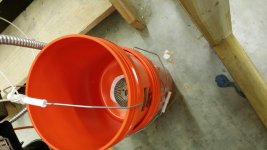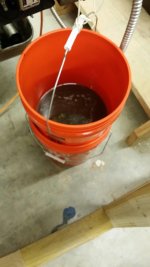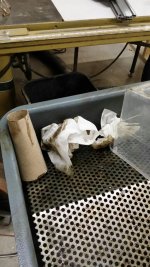swatkins
Titanium
- Joined
- Jul 24, 2011
- Location
- Navasota / Whitehall Texas
I have been cleaning out an old machine's oil sump and have about 4 gallons of brand new oil that has run through the machine for only about 1 hour. I need to remove the oil once more to repair a feed gear and I just hate to throw the oil away or pour it back in the machine in this condition.

I was wondering if anyone know a fast and easy method of filtering this small amount of oil. I considered just running it through some type of cheese cloth filter or maybe even rigging up a truck type oil filter.

I was wondering if anyone know a fast and easy method of filtering this small amount of oil. I considered just running it through some type of cheese cloth filter or maybe even rigging up a truck type oil filter.





 )
) 






